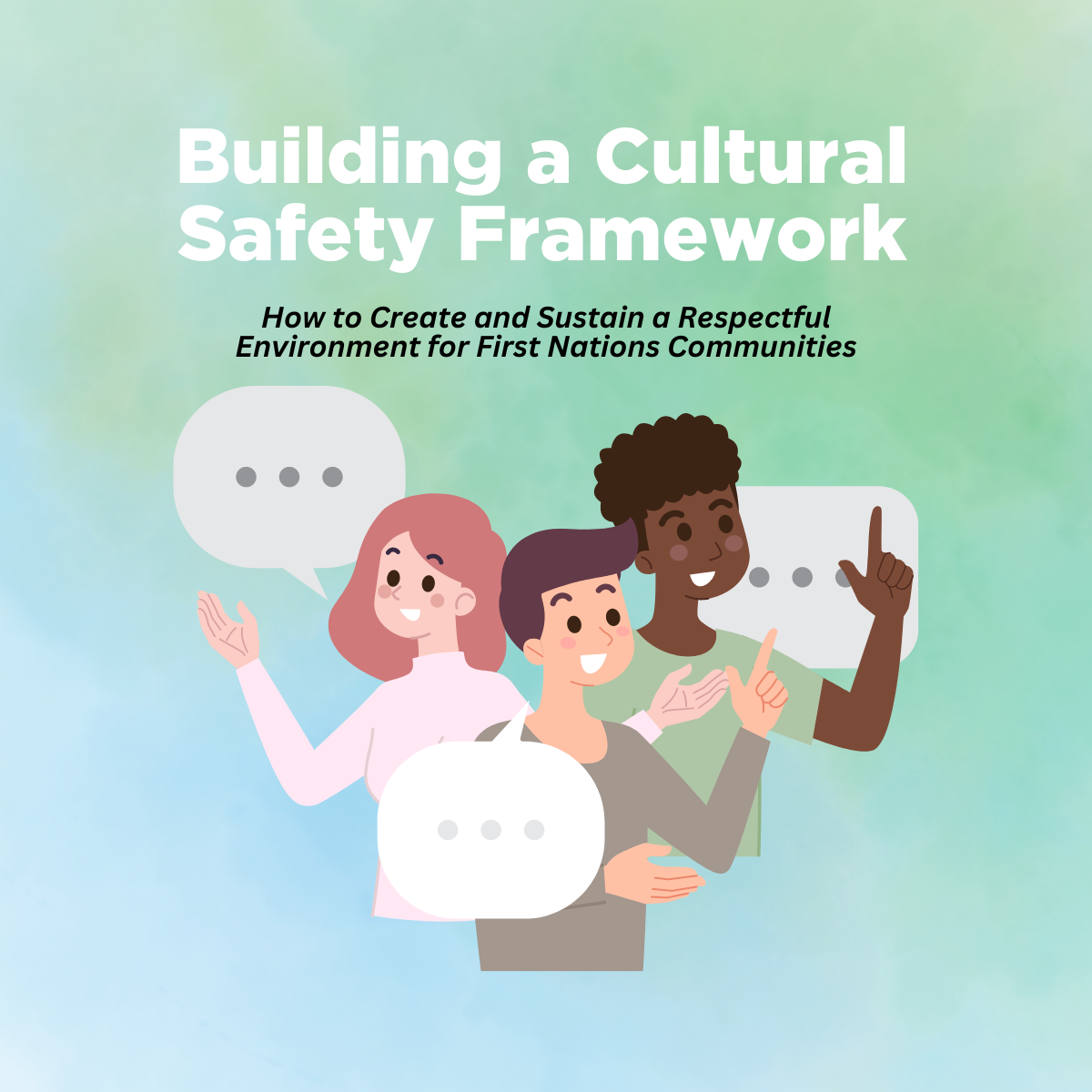Building a Cultural Safety Framework – How to Create and Sustain a Respectful Environment for First Nations Communities
What is Cultural Safety & Why is it so Important?
Cultural safety can be defined as the practice of creating and sustaining an environment that is respectful and understanding of both Aboriginal and Torres Strait Islander cultures and lived experiences. Cultural safety aims to shift the years of power imbalance that Indigenous Australians faced, and continue to face, within all Australian institutions.
This practice is important as it allows Aboriginal culture and experience to be taken seriously and respectfully. This, in turn, creates a safe environment to have challenging conversations and answer uncomfortable questions that aims to empower everyone and make important decisions, especially if the decision involves Indigenous topics, peoples, culture, or heritage.
Key Elements of Cultural Safety
As recognised by the New South Wales Government, there are six critical key elements to create a successful culturally safe workplace. These six elements are shown below:
- Recognising the importance of culture
- Self-determination
- Workforce development
- Whole of organisation approach
- Leadership and partnership
- Research, monitoring and evaluation
It is important to note that each organisation should have a personalised set of key elements that derive from the six elements above. It is crucial that they create their own to suit their organisation needs and aspirations, as well as the needs of the community that they work in.
Within the workplace, cultural safety is something that can both be seen and unseen.
Using the key six elements above, we can use those as starting points of what they can look like in action:
Understand the unique relationships that Indigenous people have with their families, communities, and land. Adhere to cultural protocols, such as respecting areas deemed off-limits by Indigenous communities.
Involve Aboriginal communities in co-designing programs and activities. Ensure that an Aboriginal person is the first point of contact for projects involving Indigenous communities.
Train your workforce to be culturally competent, hire Aboriginal workers, and provide opportunities for education on Aboriginal history, particularly as it relates to your sector.
Every worker is responsible for creating and maintaining a culturally safe environment. It should not fall on the shoulders of a small handful of employees.
Leaders must ensure that culturally safe practices are embedded in the workplace and should partner with local Aboriginal organisations to establish long-term relationships.
Keep up with current policies and research. Monitor and evaluate your organisation’s Reconciliation Action Plan (RAP) and other cultural frameworks, making adjustments as needed.
How to Build a Cultural Safety Framework
Building a Cultural Safety Framework begins with identifying your organisation’s key elements and goals for Indigenous people within your workplace or community. Start with overarching strategies—your long-term plans—and work your way down to grassroots strategies, which are more targeted and specific.
Overarching Strategies
These are your big-picture goals or long-term plans that require smaller goals to be achieved. For example, “community leadership” might be an overarching strategy, which could include forming relationships with local community members through schools or councils. Overarching strategies should be simple, clear, and easily understood.
Grassroot Strategies
These strategies are more focused and targeted. For instance, to support the overarching goal of community leadership, you might engage with local community members by attending NAIDOC events or community days. Grassroots strategies are crucial for ensuring that your overarching goals are met and that your target audience is aware of your presence and intentions.
For a Cultural Safety Framework to be successful and meaningful, it must involve community input and feedback. Co-designing your framework with local Aboriginal experts or community members ensures that it is both appropriate and respectful. This process requires trust and respect for all opinions and differences.
Cultural Protocols
When working with Aboriginal communities, it’s important to be aware of and respect cultural protocols. These protocols vary by community and should be learned by engaging with local Aboriginal organisations, such as Aboriginal Land Councils. Be prepared to answer questions about why you need to know certain protocols, and always respect the boundaries set by the community.
Continuous Evaluation and Adaptation
A Cultural Safety Framework is not static; it should evolve over time. Assign a team or individual to regularly evaluate and monitor the framework. Don’t be afraid to adjust strategies or elements as needed. For a new framework, bi-annual reviews are recommended to ensure it fits within your workplace and policies. Over time, an annual review should suffice to maintain its effectiveness.
Conclusion
Cultural Safety Frameworks are essential for creating environments that respect, acknowledge, and accommodate cultural differences and experiences. By fostering a better understanding of Indigenous knowledge and experiences, these frameworks aim to achieve better outcomes for Indigenous peoples and contribute to a more inclusive and respectful society.

